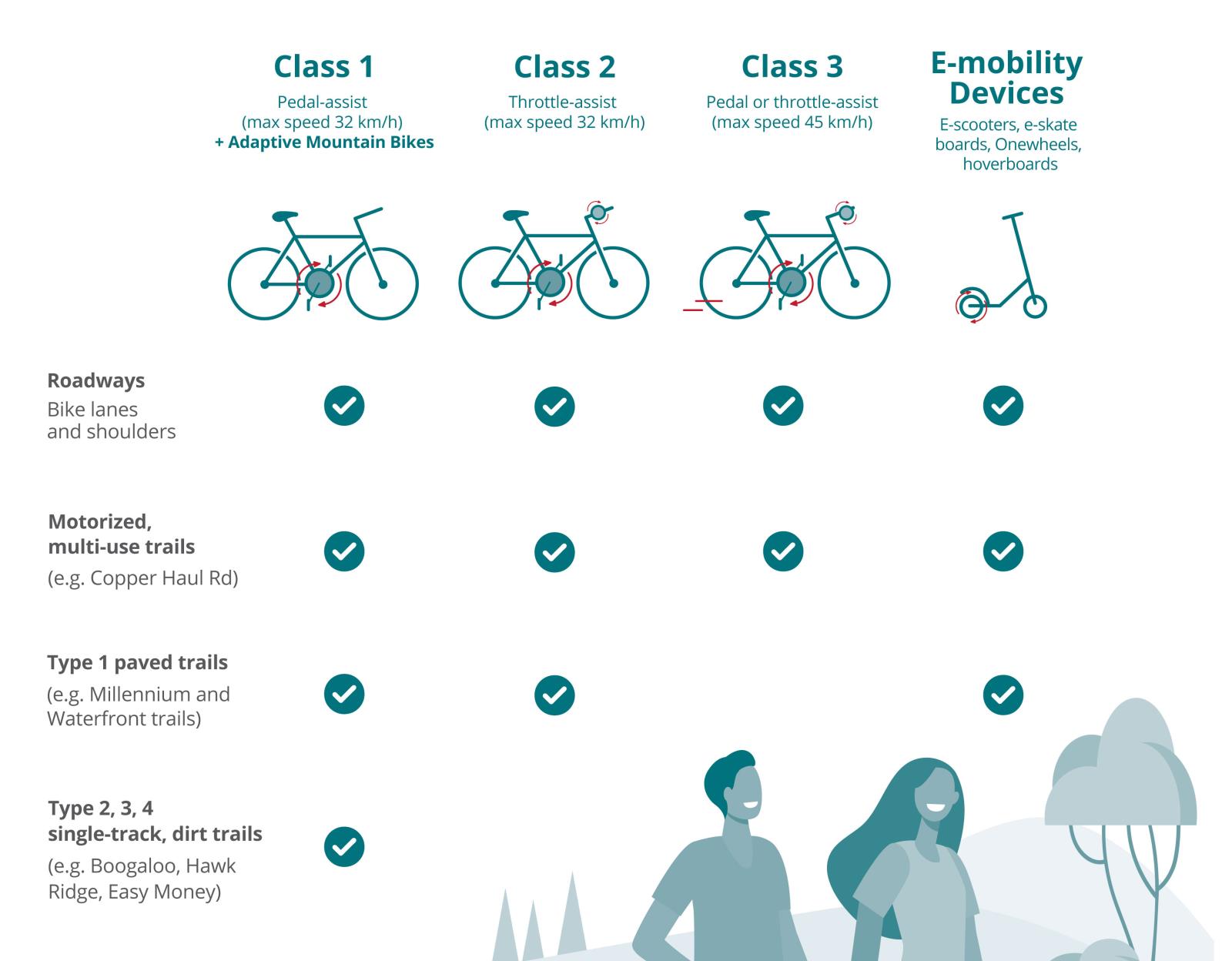E-Bikes
Curious about e-bikes? We have developed a bylaw for e-bike use in our city and on our trails to:
- minimize conflict with other trail users and wildlife, as our trails are a shared resource;
- facilitate different ways for people to access our trails;
- get more people onto bikes and actively commuting;
- protect the trails and natural areas we love.
Apply for a rebate from the Government of Yukon when you purchase a new e-bike! Click here to learn more about the rebate program.
The maximum speed limit refers to the point at which the motor stops assisting the rider. Any bike can go faster than 32 km/hr – the main thing to remember when you’re out there is trail etiquette.
- Slow down in busy sections and watch for kids, dogs, strollers and pedestrians.
- Stay right, and alert others when you pass on the left.
- Obey signage, including trail direction and closures.
- Ride safely and choose trails within your ability.
- Share the trail, respecting other users and wildlife.

- Class 1 e-bike means a bicycle equipped with an electric motor that provides assistance only when the rider is pedalling (pedal assist) and that ceases to provide assistance when the bicycle reaches 32 kilometres per hour and has a maximum continuous wattage output of 500 watts.
- Class 2 e-bike means a bicycle equipped with an electric motor that can be used exclusively to propel the bicycle (throttle equipped) and that ceases to provide assistance when the bicycle reaches 32 kilometres per hour.
- Class 3 e-bike means a bicycle equipped with a pedal or throttle assist electric motor with a nominal power output rating of 750 watts or less and that ceases to provide assistance when the bicycle reaches 45 kilometres per hour.
- E-mobility device means a self-balancing transport device powered by an electric motor which uses the shifting weight of the rider to balance the device, and includes devices such as a hoverboard, electric unicycle, and electric skateboard.
- Type 1 trails are double-track trails paved with asphalt or chip seal. Typical use includes pedestrian and cycling with limited motorized use.
- Type 2 trails are surfaced single-track or double-track trails. Typical uses include pedestrian and cycling with limited motorized use.
- Type 3 trails are unsurfaced single-track and double-track trails. Typical use includes hiking and mountain biking with limited motorized use.
- Type 4 trails are hinterland trails. Typical use includes hiking and mountain biking.
